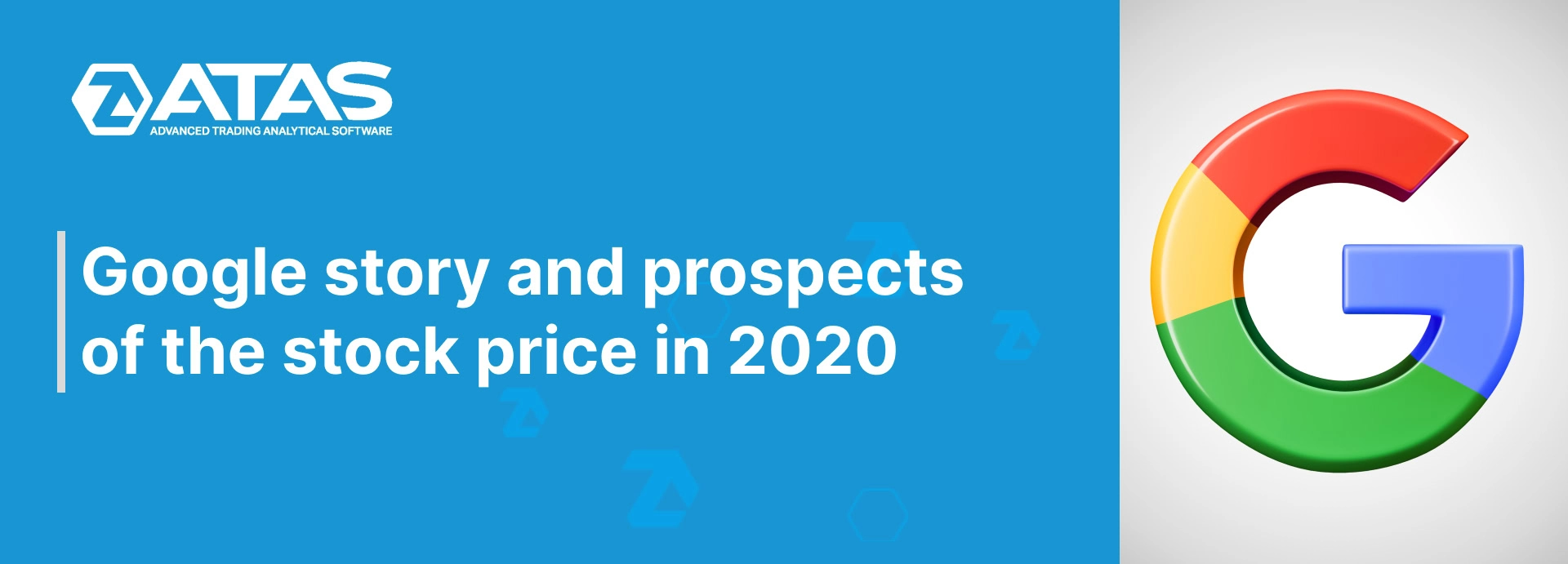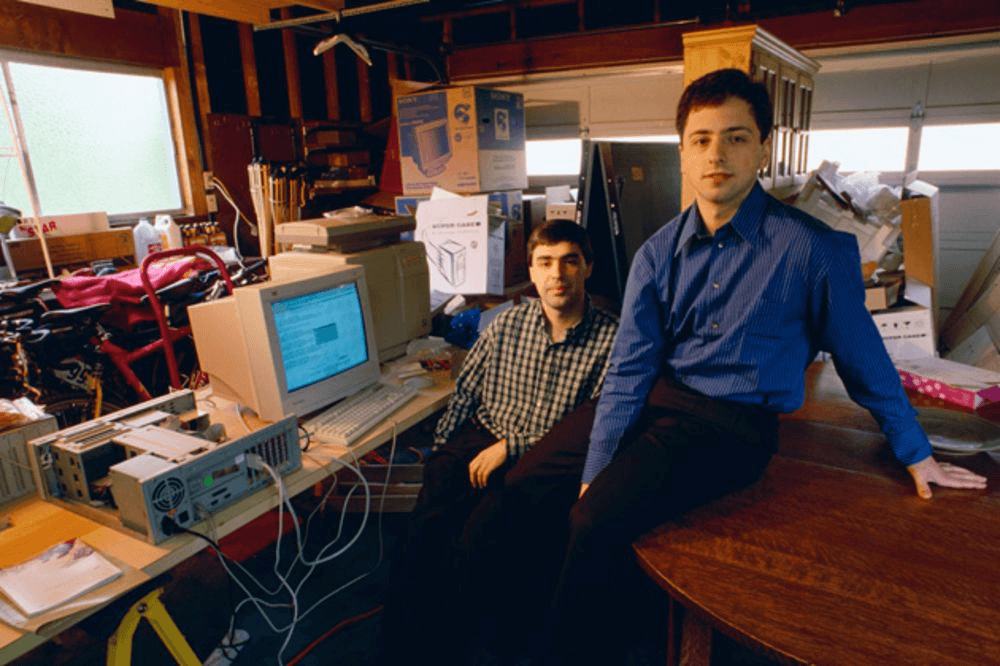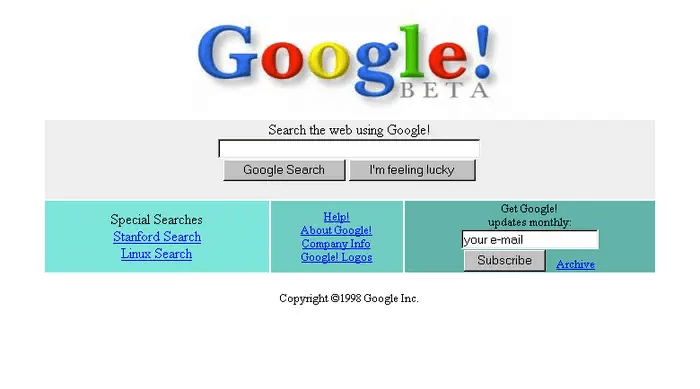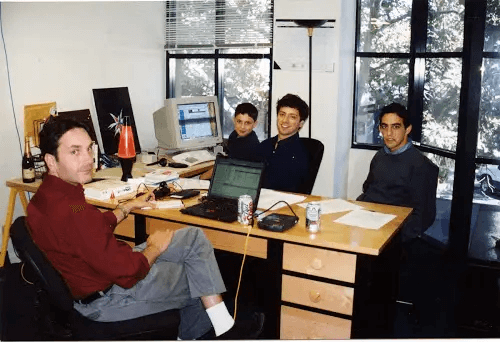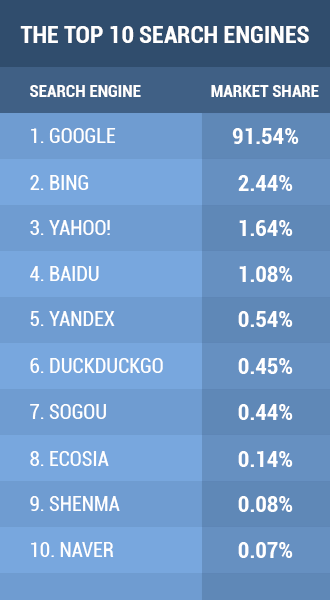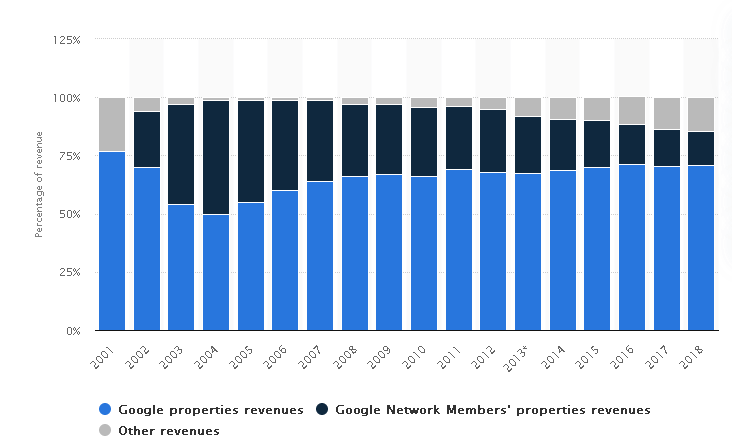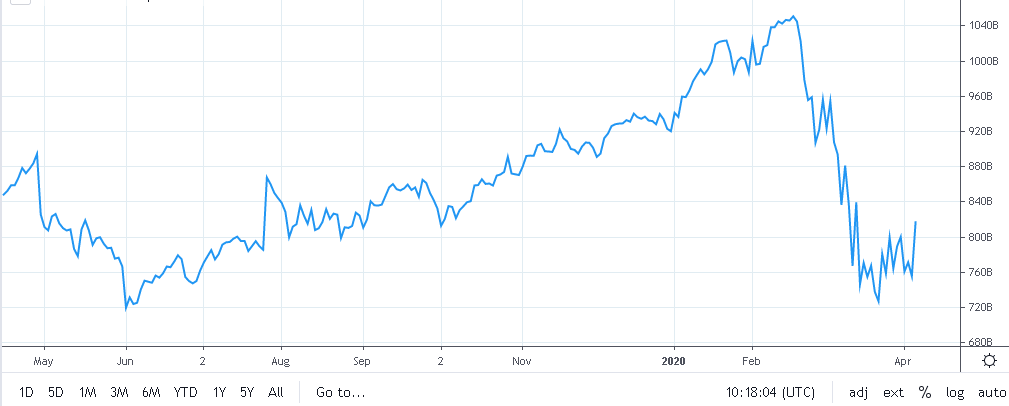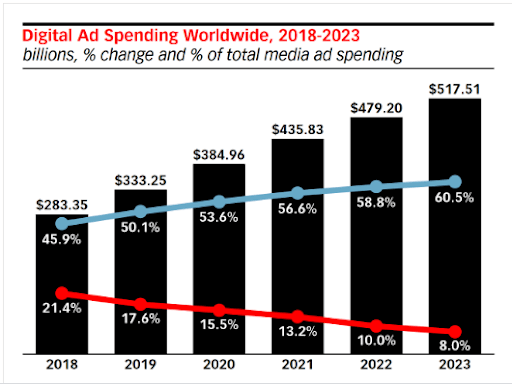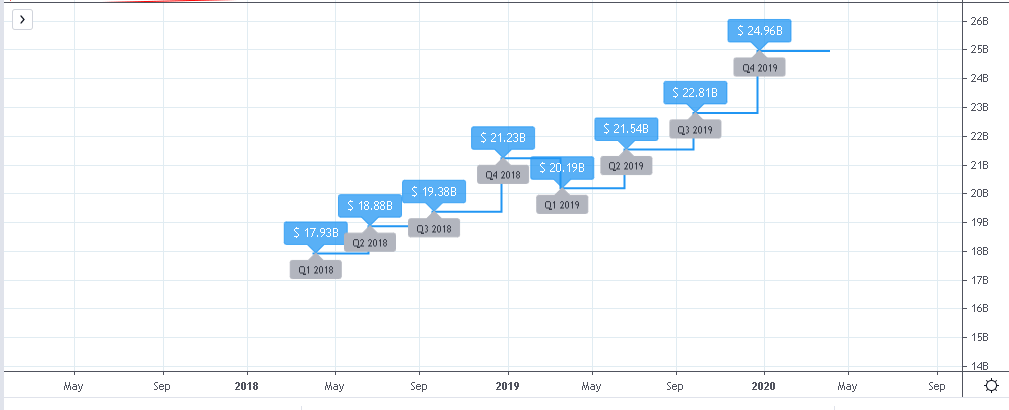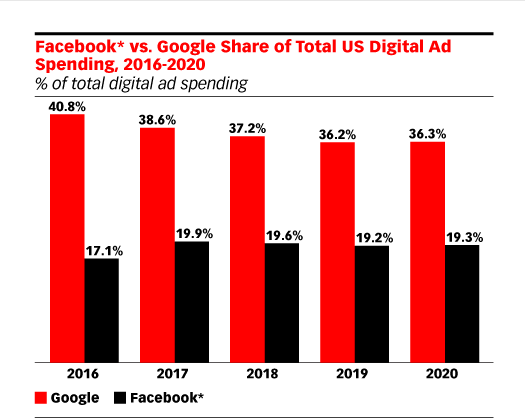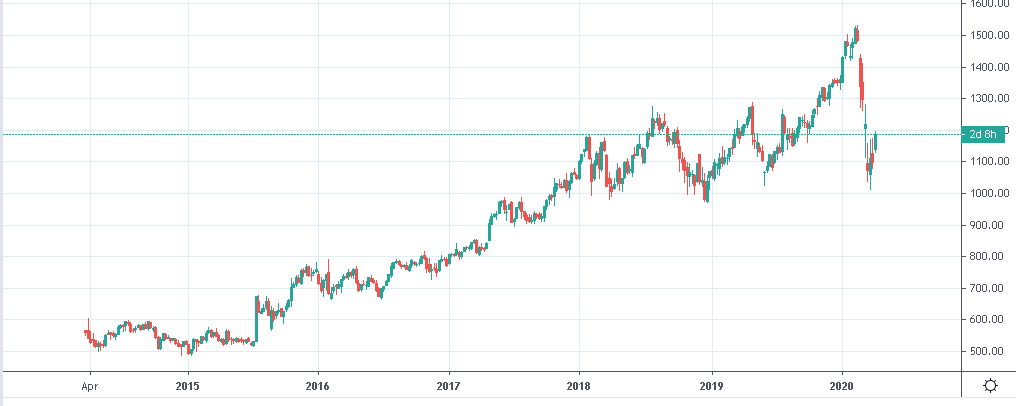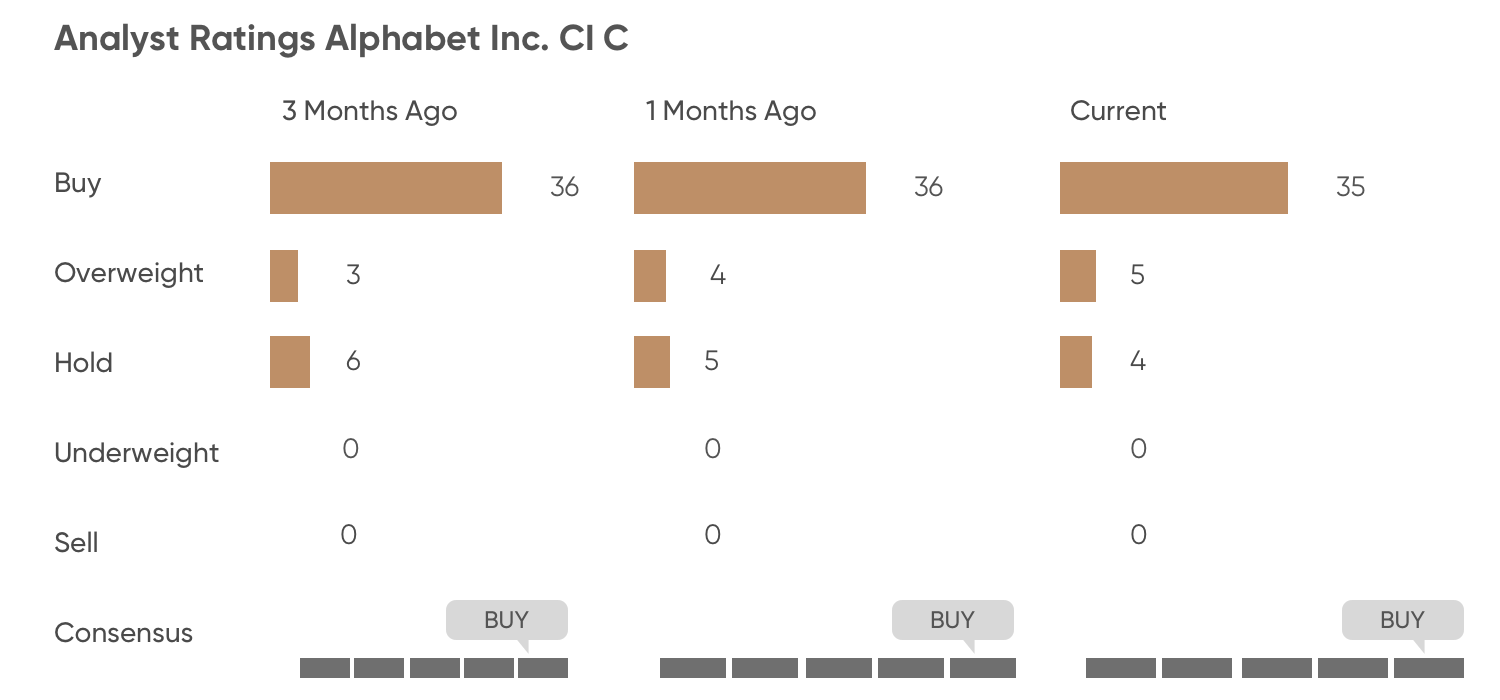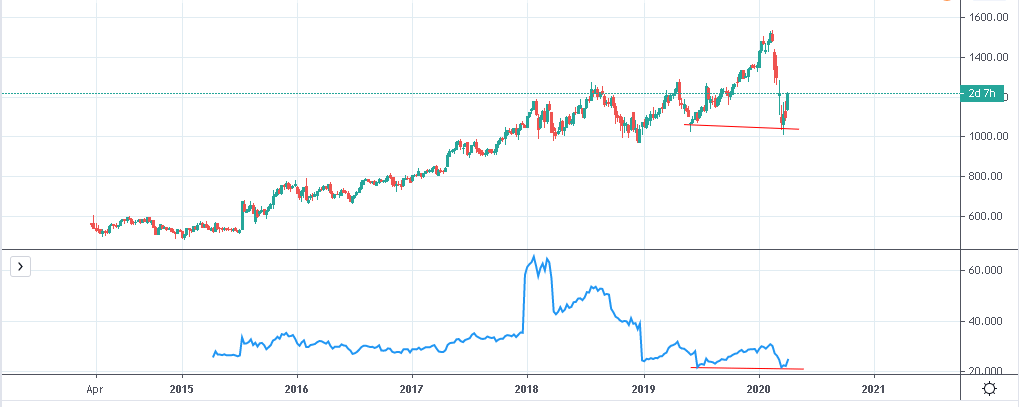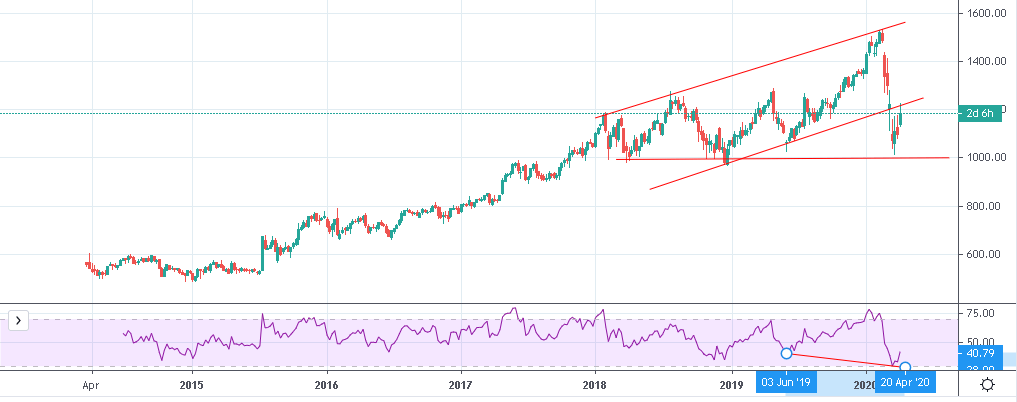Prospects of the stock price in 2020
The Google story, as well as the stories of thousands of other scouts of Fortune in the world of high technologies, started during the Internet boom of the second half of the 1990s. Its founders, Larry Page and Sergey Brin, made it one of the most expensive public companies of the world, which capitalization exceeded astronomical USD 1 trillion at the peak of its development. However, the coronavirus pandemic and the developing world economic crisis significantly shattered the optimism of stockholders, striking the Google stock price. Maybe, taking into account the low value of the Google stock, it is an ideal time to buy securities of the Internet giant. Or is it worth waiting until the situation develops further?
Read in this article:
- Recipe for creating Google: a breakthrough technology plus a stroke of good luck.
- The monopolist that feels shy due to its status.
- What the reason for the Google cash generator flourishing is.
- 2020 crisis: influence of the coronavirus pandemic on the Google stock value.
- When it’s time to buy the Google stock.
- Architects of the future: instead of the conclusion.
The Google birth
There were a lot of lucky events in the story of Google’s success. Let’s just take the scientific work of the mathematician student from the Stanford University Larry Page. In 1996, he was just looking for a proper subject for his thesis paper. It seemed to him that it would be a proper subject to study mathematical grounds of the emerging Internet network. The gifted student had an idea that it was the best of all to represent links in the form of a graph – a mathematical structure that consists of a multitude of graph nodes, connected with each other.
Page’s thesis tutor, a well-known mathematician and researcher of the artificial intellect Terry Winograd, recommended Larry to take that subject. Later, the famous billionaire called that advice ‘the best one I’ve ever received’. Maybe, Google wouldn’t have appeared without the insight of Winograd.
Search solutions of those days were based on such a criterion as the frequency of mentioning one or another word. Page realized the utter futility of that idea and started to study how many links lead to one or another page. He assumed that the link mass would be a more relevant criterion in the search results, which would allow significant improvement of the system usefulness.
Sergey Brin, who was a friend of Page and whose family moved to the United States from Moscow when he was 6 years old, joined Page in his study.
The friends developed the first search engine BackRub in March 1996 and the most famous domain on the Internet – Google.com – was registered on September 15, 1997.
Having equipped their office in a garage of their acquaintance in 1998, Page and Brin registered their first company. Soon it received the initial investment in the amount of USD 100 thousand from the Sun Microsystem founder Andy Bechtolsheim.
At the beginning of 1999 Larry hit the big time again. This time he was lucky not to make the mistake of his life. It is a legendary story of how the founders wanted to sell their creation at the beginning of 1999 for USD 1 million to the Excite Internet service. However, the potential buyer, in the person of its director George Bell, decided that even USD 750 thousand was too much for ‘yet another search algorithm’.
Later, the risk philosopher, statistician and trader Nassim Taleb will present this story as a classic example of the role of chance in business.
The idea of business partners turned out to be so successful that the project earned a lot of positive mentions by the middle of 1999, which put Google above the leaders of the industry at that time. The company moved to Silicon Valley where it stays now. The Page and Brin creation outdid the multiyear industry leader Yahoo.com and dozens of other smaller competitors in several years after the move. The friends have never thought about selling Google since then.
The monopolist that feels shy due to its status
Yet during the times when they were student-idealists, Page and Brin were advocates of the Internet purity and its non-commercial character. However, the friends changed their opinion in 1998, deciding that a bit of advertising would do no harm. As of today, the search advertising market brings Google the profit in dozens of billions of dollars.
In 2000, Google started to monetize the search results directly, selling advertisements, which were connected with the key search words. Since then, the advertising business has been the main source of revenue of the corporation, being consistently above 75% in the revenue structure.
The company has often come across charges in the abuse of the monopoly status. Indeed, the company dynamics in the global search engine market has only grown over the years. For example, according to some estimates, it reached 91.54% in 2020.
Source: https://www.webfx.com/
Google has become the object of investigations in connection of possible abuses many times during the past decade. Just to mention the anti-monopoly investigation in the EU and US in 2019. They had to do with specific features of collection of the users’ personal information and company behaviour in the advertising market. There have been dozens of such charges during the company history. However, none of these charges were painful enough to seriously harm the company and crash the Google stock value. However, sometimes the company had to pay fines in billions of dollars.
Peter Thiel, a legendary venture investor, ideologist of the world of start-ups and founder of PayPal, wrote in his book ‘Zero to One’ in 2014 that the Google monopoly is a sort of a useful monopoly. On the one hand, such companies are cash generators for investors. It is possible to make such huge money only in the market without competitors. On the other hand, Google is an innovative company, which develops a socially useful product, which makes the negative influence of the company’s monopolist status less evident. Thiel also wrote that the monopolist status is not that unambiguous. Since, if we take the global advertising market, Google’s share is not that big (it was 3.4% in 2014). There is always an alternative.
Thiel also underlines that the real monopolist would never boast that he is a monopolist, since it may have such an investigation, which would kill it. So, Google is a ‘shy’ monopolist, which never shows off its dominance in the market.
What the reason for the Google cash generator flourishing is
The base of the wealth and glory of Google is advertising (Note: although the parent company is called Alphabet since 2015, we use the more popular name – Google. The corporation existed under this name for the most part of its history). If we speak about the prospects of the Google stock price, we should also pay special attention to this subject. Of course, there are cloud services, mobile phone production and even fully automated cars, but all of them are peanuts in the general revenue structure.
Google revenue from the search and other types of advertisement varied from 75% to 99% in the general structure since 2001. See the diagram below. Revenues from the search advertising marked blue, other advertising revenues are marked dark-blue and revenues from other sources are marked grey.
Source: Statista.com
The past decade became a really golden period for Google-Alphabet in absolute figures since the revenues and profit only grew. The year 2019 became the most successful one in the company’s history by the main financial indicators: Total Revenue increased by 18% and reached USD 162 billion, while the net income increased by 12% and reached USD 34 billion, which is by one order more. As we can see from the table below, these figures are one order higher than in 2016, when the gross revenue was only a bit above USD 90 billion and the net income was USD 19.4 billion.
Source: Investing.com
It is not a surprise that the Alphabet capitalization grew ‘in leaps and bounds’ before the beginning of 2020. The Google stock price reached the peak of USD 1,562 and the company capitalization reached USD 1.05 trillion in February 2020 at the closing of trades. This level has been overpassed in the US market history only by Apple, Microsoft and Amazon.
The company value increased nearly three times due to the stock value growth from April 2015 until February 2020 (before the crash in the US stock market caused by the coronavirus pandemic), which is one of the most impressive results among all technology companies.
The fact that the global market of Internet advertising shows stable rates of growth inspires optimism in investors. The expert forecasts are also optimistic, which renders significant support to the Google stock value today.
Thus, according to analysis of the data, shown in the diagram below, the global market could grow from USD 333 billion in 2019 to USD 517 billion in 2023. The share of the digital advertisement among all media (blue line) increases. Although the rates of growth (red line) consistently fall, such a concept as the base effect should not go unmentioned.
Source: https://www.emarketer.com/
Alphabet has turned into a real cash generator during the recent years. According to Peter Thiel’s assumption, only competitors may disturb this order of things. He argues in his above-mentioned ‘Zero to One’ book that the most competitive markets (for example, the air transportation market) are always the most low-margin ones. Competition kills capitalism. The majority of the American airlines hardly manage to make ends meet due to a very severe competition despite the gradual growth of the market. Only monopolists enjoy abundance.
Can anyone shatter positions of Google, which annual revenue and profit growth (the chart below shows the quarterly Google profit dynamics) has consistently exceeded 10% during the past decade?
The company doesn’t have serious competitors in the sphere of the search traffic. Also, there is nobody on the horizon who can offer a battle to YouTube video hosting (which was bought by Google in 2006 for USD 1.65 billion) – this subdivision generates nearly 15% of the company’s gross revenue.
A small threat may originate from the fact that the market of the media advertising itself is modernized. Facebook with its Instagram gathers pace every year. Amazon also develops the traffic monetization let alone more ‘little fish’. Thus, the modern research data show that the Google share in the US Internet advertising market reduces. The market becomes a more diversified one.
The Google position is not called a monopoly in the US market any more. They talk about the duopoly – 2 companies take the major part of the market – Google and Facebook. Below is a table with their shares in the US Internet advertising market in 2016-2018 with a projection until 2020.
Google in 2020: influence of the coronavirus pandemic on the stock
Google entered into 2020 as one of the most sophisticated technology companies in the world. Apart from the traditional advertising and media business, it develops in a number of other perspective directions. The corporation divisions achieved a significant progress in quantum computing, having announced achieving the legendary quantum preponderance – the computing capacity, which is able to solve the tasks, which are beyond the control of regular computers. Google is one of the world leaders in development of the artificial intellect. Biotechnological divisions of the company work on prolongation of life and improvement of health of a human being.
The coronavirus pandemic became a real ‘Black Swan’ for the Google stock value. The pandemic crashed the financial markets at the end of February – March 2020. The Google securities lost, within two weeks, more than USD 400 falling from the year high of more than USD 1,500 to USD 1,056 on the low of closing the day of March 23. The Google/Alphabet quotations (see the chart below) have never experienced such a sharp drop in their history.
However, such a sharp drop is not surprising in the context of the world markets, since, at the same time, the S&P 500 index lost more than 40%. None of the Index securities managed to stay above the 50-day moving average.
Multiple frightening forecasts with respect to the world economy in 2020 play against the Google stock quotations. According to the estimates of IMF, OESD and influential economists, the global GDP may lose up to 2%, which is even worse than during the 2008-2009 crisis. Naturally, the digital advertising market, which is the main one for the corporation, has also got under the threat of sharp reduction. The majority of customers, perhaps, would be forced to reduce their budgets.
Is it worth buying the Google stock?
On the other hand, unprecedented measures of the FRS and US Government speak in favour of buying the stock. In order to fight the crisis, the US Central Bank reduced the key interest rate from 1.5% to 0 and announced an unlimited program of quantitative easing, which may reach USD 5 trillion. The Trump Administration and Congress also undertake impressive measures on supporting regular American citizens and enterprises introducing a program of USD 2 trillion. The Google stock looks perspective under conditions of excessive liquidity, despite a probable loss of a part of the revenue.
According to the mean estimate of 45 analysts, questioned by the Wall Street Journal, the Google securities value should recover to USD 1,551 already by the end of the year 2020.
Besides, the experts are quite concordant – 35 out of 45 recommended at the end of March 2020 to buy the Google stock. However, although expectations are very optimistic, you should remember that analysts often make mistakes. Nobody is 100% sure about the future, especially when we speak about the stock value forecast.
Fundamental analysis of the Google stock
Fundamental indicators of the company look attractive. The price to earnings ratio (p/e) fell close to the 5 year low – down to 22.
The financial position of Google is stable. The debt load is low – just about USD 16 billion of the general debt in 2019 with the annual revenue of USD 161 billion – these are peanuts. The company accumulated a huge rainy-day fund in the form of USD 115 billion of cash due to the average growth of revenues by 20%. Google has actively invested during recent years into development and it buys prospective businesses. It’s quite possible that there will be more than one major deal in 2020 on the crisis background.
When it’s time to buy the Google stock
Financial position of the Internet giant doesn’t raise concerns. A low debt, high liquidity of the cash flow and huge cash reserves create a reliable financial ‘pillow’ for the crisis times. However, if you buy Google stock for a long period of time, you should take into account the risk of a long-term financial crisis in the world.
At the beginning of April 2020, the majority of economists were inclined to think that the crisis would have the ‘W’ shape. It means that there would be two waves of the fall of the economy, after which a fast recovery would follow.
At the middle of the month, more and more experts speak about the risk of the L-shaped crisis – a fall with a long recession. In such a case, Google stock may be stuck in the flat for a long time.
So, when does the best time for buying Google stock come? There is no obvious answer to this question, since it is unreal to give a guarantee for the financial markets. However, there are methods, which would help to reduce risks. For example, it is possible to form a plan of buying Google stock, orienting at its chart and dynamics.
For example, to buy about a half of the planned volume in the event of preservation of the long-term support level of about USD 1,000 per share. Moreover, it is better to wait for one more wave of reduction, since the current recovery of the Google stock value is (quite probable) just one of the retracement waves. The probable goal of the current retracement is testing of the lower boundary of the ascending channel (USD 1,220-1,240), which was broken in the middle of March.
About 25% of the planned volume could be bought after emergence of more reliable buy signals. The price often draws, before the growth starts, something like the ‘double bottom’ or inverted ‘head and shoulders’ pattern (technical analysis chart patterns). Reliability of buys would grow significantly after testing the support levels and breakout of the formation. The other 25% could be bought in the phase of the obvious growth.
It is also necessary to keep in mind that the level of USD 1,000 per share is not made of iron and steel. A possible breakout with closing a weekly candle below the support level would signalize that the crisis dragged on and it’s better not to hurry with buying stock. The main task of an investor during any financial crisis is not to lose. If you manage to preserve your capital, there will be chances to buy Google stock in the future.
Architects of the future: instead of the conclusion
Google became one of the main technology pioneers of the 21st century and made its founders – Larry Page and Sergey Brin – ones of the richest men on Earth. Its multiple services, whether it is the search engine or Android operating system, cloud services or office applications are deeply integrated in the everyday life of the majority of the Earth population.
Nobody knows what the future would be, however, it should be acknowledged that the chances of the innovators from Google to preserve the role of the world technology leader in the third decade of the century look achievable. The company of Page and Brin is one of the world leaders in such breakthrough spheres as quantum computing, artificial intellect and even biotechnologies.
Of course, the main distinctive feature of the billionaire friends is not luck, although it was favourably disposed to them many times. They have a long-term vision and they still remember what it is to be dreamers, generously investing in technologies, which bring the future much closer and, perhaps, make it a bit better.
Good luck investing!
Information in this article cannot be perceived as a call for investing or buying/selling of any asset on the exchange. All situations, discussed in the article, are provided with the purpose of getting acquainted with the functionality and advantages of the ATAS platform.

